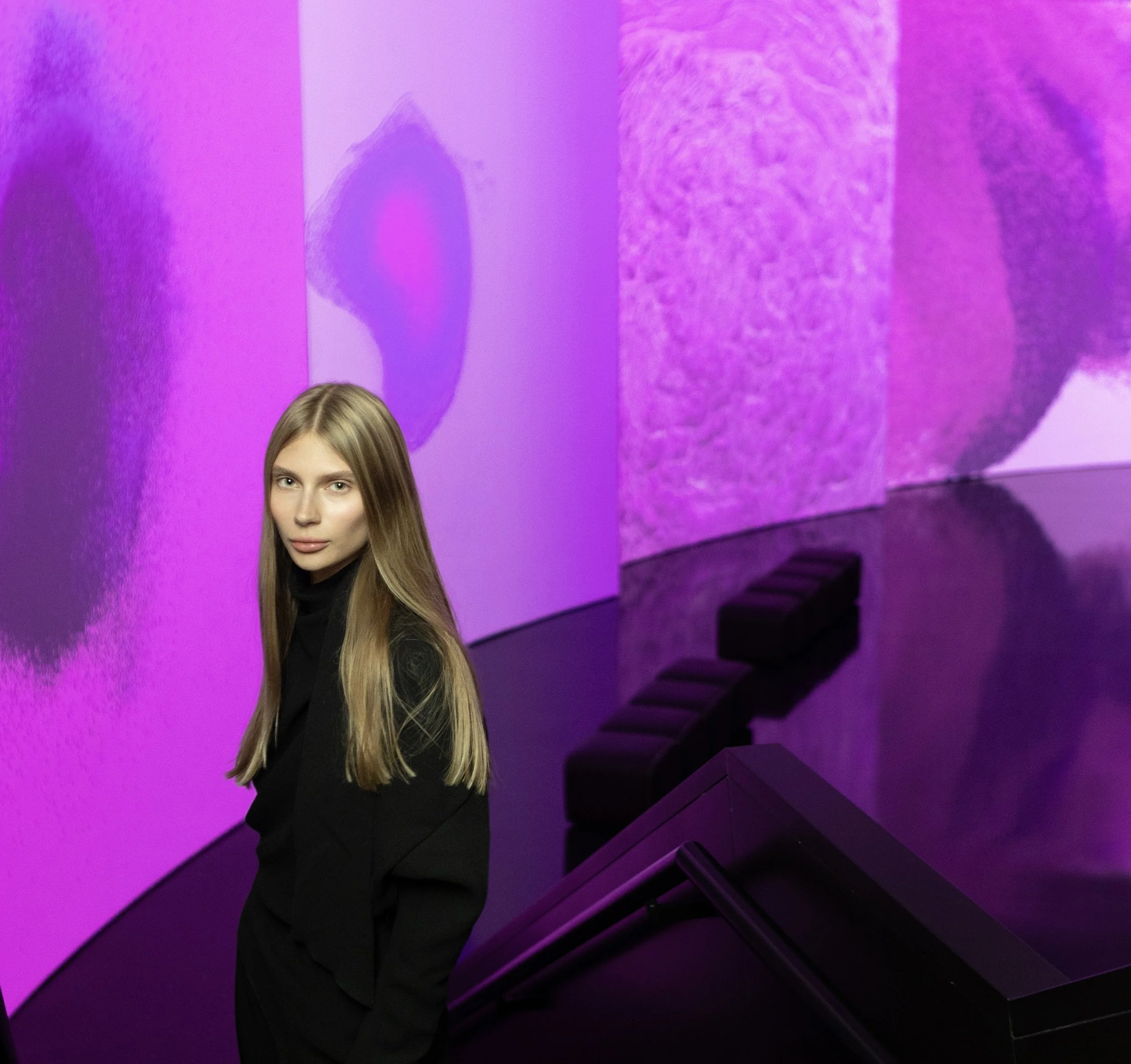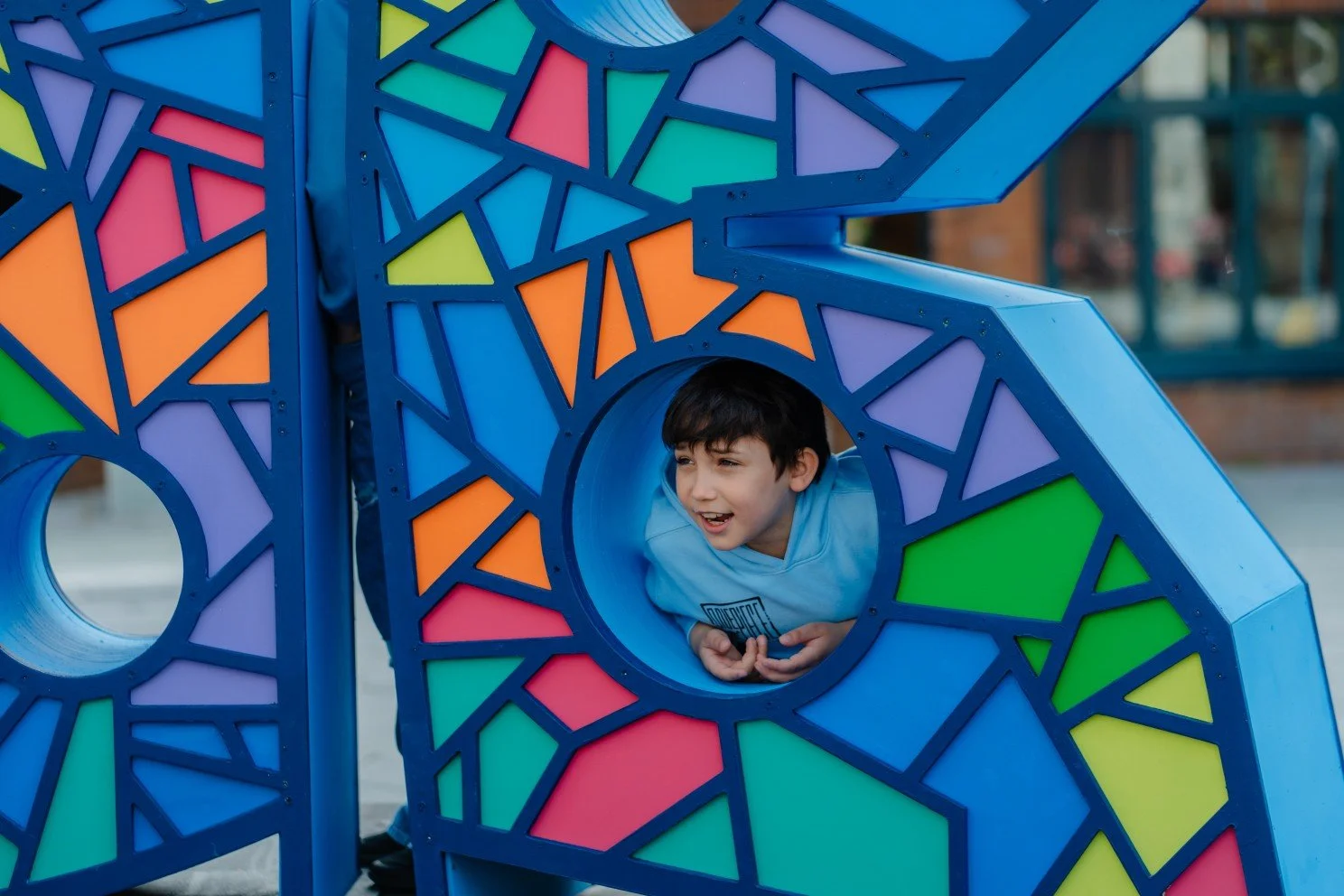10 Questions with Lab212 Collective
Lab212 is an interdisciplinary art collective, founded in 2008 in Paris by friends who all graduated in Media & Interaction Design at Les Gobelins Paris. In 2015, they were Ambassadors representing the Assises de la Jeune Création's artistic field for the French Ministry of Culture and Communication.
Using new media, the collective creates installations that explore Lab212 Collective’s perceptions of space and sound.
These pieces, in which the visitor becomes an actor, provoke a loss of bearings and offer a sensitive interpretation of impalpable phenomena by giving them materiality as through light and sound beams in space (Passifolia, 2020), the force of the wind on the landscape (Nebula, 2018), or the weight of the body in the atmosphere (Starfield, 2012).
"Encoding the evanescent relationships between physical and virtual worlds as strings of bits and bytes written in ones and zeros, the French artist collective Lab212 draws on science, video games, and music to build poetic and playful sensory experiences.
Using craft and technology to ignite imagination and convey emotions. day-to-day human gestures are magnified to reach the inaccessible; the shifting of the gaze reveals the imperceptible." Caroline Hirt, Curator
Passifolia, Lab212©
members
Jonathan Blanchet, Juliette Champain, François Chay, Cyril Diagne, Erik Escoffier, Nicolas Guichard, Béatrice Lartigue, Tobias Muthesius & Pierre Thirion.
exhibition
Their works were exhibited at the Barbican Centre (London, GBR), the V&A Museum (London, GBR), the Miraikan Museum (Tokyo, JPN), the Museum of Digital Art (Zurich, CHE), the DMuseum (Seoul, KOR), le Centre Pompidou (Paris, FRA), la Gaîté Lyrique (Paris, FRA).
awardS
Lab212 has won several international awards, including from the Sundance Film Festival (New Frontier Selection: Notes on Blindness), Ars Electronica (Interactive Art Honorary Mention: LightType), the Lumen Prize (Performance Award: Portée/).
INTERVIEW
Lab212 collective, welcome to Al-Tiba9. Who are the artists in Lab212? What is your background?
Lab212 was founded in 2008 by a group of friends who all graduated in Media & Interaction Design course at Les Gobelins Paris (For almost 50 years, Gobelins, l’école de l'image has been a global reference in the field of Design).
Lab212 is composed of 9 artists based internationally (France, Canada and Spain): Jonathan Blanchet, Juliette Champain, François Chay, Cyril Diagne, Erik Escoffier, Nicolas Guichard, Béatrice Lartigue, Tobias Muthesius and Pierre Thirion.
We have different and complementary skills: some related to the fine and applied arts and others in engineering or animation movies.
This combination of sensitivities to art, Design, and technology has forged the identity of the Lab212 collective.
For 10 years, we had the pleasure to exhibit our work at the Barbican Centre (London), the Miraikan Museum (Tokyo), the Museum of Digital Art (Zurich), the DMuseum (Seoul), le Centre Pompidou (Paris). We won several international awards, including the Sundance Film Festival, Ars Electronica, and the Lumen Prize.
Was there a crucial moment when you decided to follow together with your path as a collective of artists?
One of the reasons that bring us together at Lab212 – beyond being friends and having related sensitivities – is the desire to share and the pleasure of learning by experimentation, through research, prototyping…
At the end of our studies, we thus decided to pursue this human and artistic adventure.
Many of us also regularly teach in Art and Design schools, participate as jury members, monitor students' thesis at Gobelins Paris, ECAL Lausanne, Beaux-Arts de Toulouse, etc.…
Being an artist requires great discipline beyond imagination, as well as a never-ending desire and curiosity.
We mostly work in pairs or trios on projects, which helps us investigate directions we hadn't considered and push them further conceptually.
Passifolia, Lab212©
Passifolia is a monumental and interactive art installation, commissioned by Hermès. Please tell us the intention behind this work of art?
How, across the emptiness, to suggest lush fauna and flora? How to use sound and light vibrations to interfere with our bearings and our apprehension of space while giving it a sense of materiality?
Passifolia consists of a large and dark empty room, cast through with long beams of light.
By touching a light beam, the visitor widens it and releases a bird song just above him. He feels the warmth of the light on his skin and the gentle sounds of nature surrounding him.
Once the bird sound ends, the beam narrows down, inviting the visitor to continue his exploration.
With Passifolia we wanted to draw an imaginary and minimalist landscape, revealing a feeling of luxuriant nature under the visitors' path.
The piece is made of 16 interactive modules organically set up in space. The modules are each composed of an automated light, an ultra-directional speaker, and a sensor system.
A gentle, immersive, and evolutive melody is played by 12 ambient loudspeakers all around the space.
The musical composition for the piece is made-to-measure by the musician Chapelier Fou.
A hundred sounds of birds, squirrels, frogs, etc. recorded in the wild by naturalists are arranged by Chapelier Fou to create an ever-changing harmonious nature soundscape.
Passifolia, Lab212©
You invite the visitor to enter a virtual yet real-world rich in natural elements and experimentation. How do you define the notion of space and time in Passifolia?
The space is empty of any object, any physical or visual setting. The combination of light and sound brings a sensation of the jungle. Some sounds are global, others hyper-directive, thus creating both a vast landscape and a close and intimate presence.
The ambient music composition played all around the room, evolves slowly. In contrast, for each beam, a dozen songs from the same bird can be played, which in the end produces a piece that is both ephemeral and unique, recreated with each incoming visitor.
We play on these endless possibilities to develop experiences where time freezes, as interlude where emptiness recovers its full role.
The visitor's body acts as an agent, a vector, or a material for the experience that is performed.
The art is both in the piece and its reception.
Even if we guide them, each visitor can experience it at his own pace. That's the beauty of interactive installations: the visitor is part of it and makes it unique.
What do you see as the strengths of your project, visually or conceptually?
Through a distance setting, or a re-contextualization of an object (technical or not), we can question the common imaginary that inhabits this object through its symbolism, its function…
For example, with Passifolia, we take advantage of the suggestive power of sound on our brains to create a shift: the room is empty, but space behaves like a living organism, with its own personality.
Sometimes the most interesting interaction is between the spectators themselves, and the work becomes a means of connecting.
Thus we could say that the aesthetic and conceptual aspects are two sides of the same coin, mutually interdependent.
Could you tell our readers about your creative process?
Our working process is similar to the scientific and research process. Based on artistic and creative intuitions, we develop a hypothesis that we will test and evaluate to express our original artistic intention and propose a meaningful experience that will concern and/or disturb the visitor.
There is a constant back and forth between technical issues and the expressive intentions we seek to convey. Each project is different. For each one, we implement creative and technical research in parallel.
Passifolia, Lab212©
How do you make use of technology? What do humans excel at, and what do machines excel at?
Technology is part of our daily life, and although it may seem immaterial (5G network, big data stored in the cloud...), it has a significant impact on our environment.
BL: I don't know whether we should set humans with their fragility and creativity against machines that would be cold and flawless, but current events show us that technology obviously has its own flaws (Cambridge Analytica...). I would say that machines that do not possess feelings and awareness of self and others, are not capable of empathy unlike humans.
On the other hand, machines are particularly good at performing repetitive or boring tasks, without ever getting tired, discouraged, or even giving up...
GL: Technology allows us to go beyond our physical and intellectual conditions, to free ourselves from certain tasks we are not very good at. We use the fascination it exerts on us and tries to draw poetry from it.
I don't know who said that a technology we do not understand has something to do with magic. That's precisely what we are interested in technology: its magical side.
How do you keep yourself up to date with the latest digital trends and technologies that have today a significant impact on your artistic production?
We take part in many events in the artistic and new technology fields: for example, we will be giving a talk at the KIKK Festival (Founded in 2011 in Namur, the KIKK Festival creates bridges between art, culture, science, and technology) on 5 November 2020 in Namur, Belgium. This is a very good opportunity to meet new actors in the contemporary field: artists, academics, geeks…
Finally, we spend a considerable amount of time carrying out research and tests that are not always implemented in our artistic practice, but which nevertheless allow us to embrace new areas of research and to better appreciate the issues at stake and to work as a team, with partners who are highly qualified in their areas of expertise.
However, we do not necessarily seek to exploit the newest technologies at any cost. What is most important is to adopt the technology that best matches our artistic intentions within a work context.
Is there a piece you consider a "breakthrough" in your career?
BL: I would perhaps say a Virtual Reality piece called Notes on Blindness. This project was inspired by the testimony of John Hull, who became blind at the age of 40.
Through this year-long project, carried out with a dedicated technical team, I experimented and explored topics particularly close to my heart, such as the loss of landmarks, the body's perception, or our senses' influence. The brain....
*Notes on Blindness was selected at the Sundance Film Festival in 2016 and exhibited internationally, exploring VR through the use of 360° binaural sound.
NG: The piece Starfield (Starfield was exhibited in 2015 at La Gaîté Lyrique in Paris, in 2016 at the Museum of Digital Arts in Zurich, and 2020 at ArtGenève) was particularly remarked and exhibited all over the world. It is a simple and brilliant idea by Cyril Diagne, which consists of a swing in front of a screen-projected starry sky. Balancing on this swing allows us to move forward in the sky at the rhythm of our swing.
What do you wish you knew about light installation art before you got started?
We have the chance to work regularly in collaboration with partners - depending on the characteristics of each piece - for example, with Passifolia, we worked with the Light Designer Mathieu Cabanes, a Light Designer at the Opéra National Montpellier in France, who has shared his expertise.
In this way, we were able to consider: how to materialize particles of light in an empty space or infuse life and subtleness into a "fixed" ray of light?
It means a lot to us as artists to be able to test, explore, and achieve certain expertise on the medium, that we then deploy in our installations.
But generally speaking, good communication with all the partners involved and a strong organization are the cornerstone of the success of any ambitious and large-scale project.
Nicolas Guichard x Béatrice Lartigue, Lab212 Collective


























